Range Hood Noise Project
opaone
3 years ago
last modified: 2 years ago
Featured Answer
Sort by:Oldest
Comments (64)
opaone
2 years agolast modified: 2 years agoRelated Discussions
Z line range hood - more than TWICE the decibels - why so loud?
Comments (8)A few thoughts... - Many noise apps are not very accurate. Most accurate we've found in our lab is Decibel X on an iPhone 8 or newer. Make sure you are using dB(a), not dB(c/z), are 1m from the hood, etc. More on how to accurately measure: https://www.houzz.com/discussions/6040827/range-hood-noise-project - Duct and blower should be mounted with strap and NOT ever come in contact with framing or other elements that transmit vibration noise and effectively turn your house in to a giant speaker. - Yes on duct possibly being too small. If so then this will result in increased noise. - Bends/Turns (w/ proper sized duct) are actually good for noise reduction even if not so good for overall performance. - Distance to blower is good for noise reduction. - A duct silencer between the hood and blower can be very helpful. - 1200 CFM is a lot for such a small hood. You likely have a lot of noise just trying to pull a lot of air through a small baffle. - Baffle design has a big impact on noise levels. Many consumer hoods do poorly on this. How loud is it w/ baffles removed? - Your hood lacks sufficient containment volume which requires you to operate at much higher CFM's (and thus greater noise) for the same (or worse) effectiveness at effluent removal. - Blower may be out of balance. Not necessarily noise related: - Your hood looks the same width as your range. The aperture/opening s/b at least 6" wider than your range and ideally at least 27" deep....See MoreIs a 48" range too big for our space?
Comments (38)Well, reading this thread was an enjoyable interlude, although I'm not sure that there wasn't any schadenfreude hiding in my unconscious. As I don't have an iPhone to use to provide noise measurement consistency with @opaone's noise measurement request, all I can say about my 1500 nominal CFM system is that it certainly is noisier than my SubZero 632, or my Miele Optima (especially when it's broken), but not so noisy that one can't talk across or along it with a reasonably normal voice level. At 3 times the person-to-person distance (R^2 = 9), a TV source needs to be made louder to hear with the same clarity as when the hood system is off, if the listener is under the hood edge. @Indecisiveness: For both residential hoods and commercial hoods designed using the Greenheck method, air velocity is where its at. However, there is a significant difference between the values needed. In the case of the residential hood, which I have (Wolf Pro Island hood), there is a need to immediately entrain the rising effluent into the air flow passing into the baffle gaps. In the much taller commercial hood, there is a large air volume reservoir below (and often beside) the baffle assemblies that allows CFM averaging (I call it) over the baffle space. Due to height and shape, commercial hoods allow the effluent velocity to slow down. As a result, the necessary specific hood entry aperture air flow (ft/min or CFM/sq. ft.) can be lower for a given spillage threshold. See images. Lower air velocity means a less noisy hood system, and with care, a less noisy MUA system. Opaone's baffle gap air velocity should be lower than mine when dealing with the same effluent. The effluent path to his hood's baffles is likely 5 to 6 feet above the cooktop, whereas to mine it is about 3 to 4 ft (angled baffles). His hood is large enough to encompass the rising and expanding effluent at commercial hood height. All that is physically needed for a commercial grade system is sufficient kitchen ceiling height and a decent passage space to the outside for hood system and MUA system. Compromise to residential configurations is basically driven by architecture and aesthetics, if funding is sufficient. Spillage vs. no spillage from a griddle to a commercial hood; difference is specific air flow. (The image is showing schlieren photography heat imagery, not steam.)...See Morexo hood need advise to meet local building compliance
Comments (7)Jennifer: A semi-pro stove requires a semi-pro ventilation system, and the costs will be commensurate. You or someone you trust will have to do the ventilation research. Most of the principles and formulations that you will need to know have been presented on this forum for more than a decade. The review will take some time but it will be worth it in venting performance and noise minimization. To start, here are some recommended links: The "Greenheck guide" first dozen or so pages https://www.tagengineering.ca/wp-content/uploads/2015/02/KVSApplDesign_catalog.pdf Some threads of note on this and the HVAC forum: https://www.houzz.com/discussions/2328297/range-hood-faq-personal-notes-updated-10-31-2007#n=20 https://www.houzz.com/discussions/5161173/hood-faq#n=101 https://www.houzz.com/discussions/6099827/exhaust-hood-faq-ii#n=113 https://www.houzz.com/discussions/6040827/range-hood-noise-project https://www.houzz.com/discussions/5888450/seeking-muas-advice#28657635 And opaone's quasi commercial adaptation for his residence with emphasis on indoor air quality: https://bamasotan.us/range-exhaust-hood-faq/ Searches will provide many more helpful messages. Once you have internalized this material, you will understand why simple "buy this" advice cannot be provided without a lot of additional information from you, informed by your reading....See MoreShopping for a range hood? Need help!
Comments (8)Perhaps I should add these comments: Commercial kitchens, such as restaurants, have kitchen ventilation operating cost as one of their main cost drivers. So they optimize on capture and containment performance vs. operational electrical cost. For residences, this is not usually an issue, so the trade space is bounded by the three factors: performance, aesthetics, and acquisition/installation cost. You won't get high performance and great aesthetics (buyer determined) at low cost. Either pick two of the three to maximize, or trade among them. No air leaves the kitchen via the hood system that hasn't entered the kitchen either incidentally (including wall leakage) or via a deliberate make-up air (MUA) system (simple or complex). Commercial units typically operate at one or a few air flow rates against which the MUA can be easily balanced. For residences with potentially multiple exhaust fans and a hood often operated over a variable range of flow rates, the residential MUA system may have added complexities over a commercial one. Further, code enforcement doesn't care if you gag your hood and fill your house with cooking effluent, code enforcement cares whether you pull a weak vacuum with the hood and back-draft combustion appliances, thereby pulling carbon monoxide into the house air. So at some point a search here on 'MUA' is recommended. In addition to many MUA threads on this forum, there is also a relevant one on the HVAC forum: https://www.houzz.com/discussions/5888450/seeking-muas-advice#28657635 Last, or first, the adoption of commercial elements into residential cooking ventilation may have merit for some, depending on space available and cost, so there is this link to ponder: https://bamasotan.us/range-exhaust-hood-faq/...See Moreopaone
2 years agotassadar
2 years agoopaone
2 years agolast modified: 2 years agokaseki
2 years agoopaone
2 years agokaseki
2 years agoopaone
2 years agokaseki
2 years agoopaone
2 years agolast modified: 2 years agoopaone
2 years agobry911
2 years agolast modified: 2 years agobry911
2 years agolast modified: 2 years agoopaone
2 years agolast modified: 2 years agovinmarks
2 years agobry911
2 years agolast modified: 2 years agobry911
2 years agokaseki
2 years agolast modified: 2 years agoopaone
2 years agolast modified: 2 years agobry911
2 years agolast modified: 2 years agovinmarks
2 years agobry911
2 years agolast modified: 2 years agoopaone
2 years agolast modified: 2 years agobry911
2 years agolast modified: 2 years agokaseki
2 years agovinmarks
2 years agokaseki
2 years agovinmarks
2 years agokaseki
2 years agovinmarks
2 years agokaseki
2 years agolast modified: 2 years agoopaone
2 years agoopaone
2 years agoopaone
2 years agoopaone
last yearHU-479528764
last yearopaone
last yearlast modified: last year2rickies
last yearHU-479528764
last yearkaseki
last year2rickies
last yearkaseki
last year2rickies
last yearkaseki
last year2rickies
last yearopaone
last yearlast modified: last year2rickies
last year
Related Stories
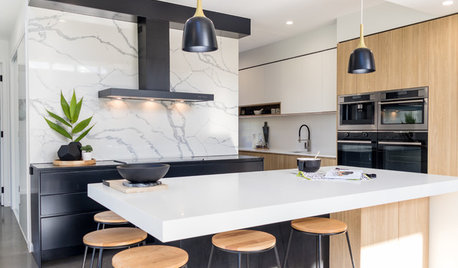
KITCHEN DESIGNHow to Get Your Range Hood Right
Get a handle on the technical specs, and then learn about fun design options for creating a beautiful kitchen feature
Full Story
5 Stunning Modern Range Hoods
Today's kitchen range hoods can look like sleek sculptures. Here's what to look for when you go shopping for one
Full Story
KITCHEN MAKEOVERSKitchen of the Week: Hand-Painted Range Hood and Classic Finishes
A designer puts hardworking materials, repurposed features and personal touches to work in her own charming kitchen
Full Story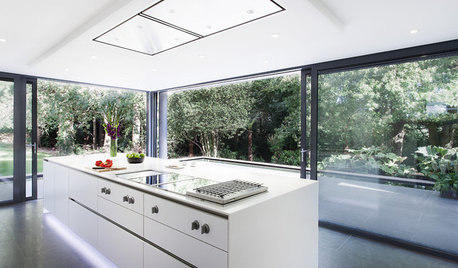
KITCHEN APPLIANCESDisappearing Range Hoods: A New Trend?
Concealed exhaust fans cut visual clutter in the kitchen
Full Story
KITCHEN APPLIANCESWhat to Consider When Adding a Range Hood
Get to know the types, styles and why you may want to skip a hood altogether
Full Story
KITCHEN DESIGNDesigner Tips for Range Hoods, Appliances and Lighting
Learn how to get your microwave height just right, what kind of bar stool will be most comfortable and more
Full Story
KITCHEN DESIGN10 Terrific New Ideas for Wrapped Range Hoods
See how designers use various materials and ornamentation to play up or play down a covered kitchen range hood
Full Story
KITCHEN APPLIANCESHouzz Call: Show Us Your Creative Range Hood
Have you customized your kitchen’s range hood? Please tell us all about it
Full Story
KITCHEN DESIGN15 Statement Range Hoods to Inspire Your Kitchen Remodel
See how 15 range hoods add personality and an intentionally designed look to their kitchens
Full Story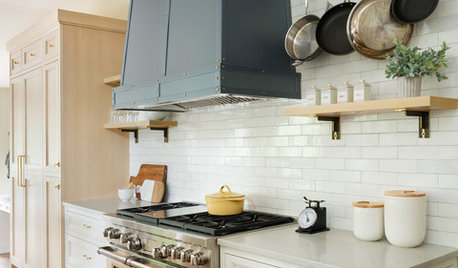
BEFORE AND AFTERS4 Kitchen Makeovers With Standout Range Hoods
In these before-and-afters, see how a custom range hood can take your kitchen renovation to the next level
Full Story





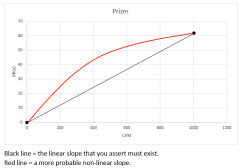


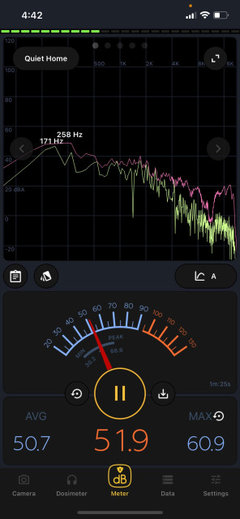

kaseki